
Introduction
Some of the biggest challenges for any organization are allocating resources correctly, ensuring teams are focusing on the right strategic goals, and anticipating market changes that could impact the business. The foundation for navigating these challenges centers around workforce planning. Having the right resources in the right spots within the business leads to agility, adaptability, and successful collaboration across the board.
The importance of proper workforce planning cannot be overstated. Without it, businesses flounder. Luckily, technology is making workforce planning more accurate, proactive, and faster than ever.
“55% say that their organization uses a workforce management software to help manage their personnel and track employee metrics. Digital tools of all types are used to make running a business streamlined, and workforce management (WFM) tools provide an opportunity to optimize how an organization allocates resources and distributes work.”
According to a survey of CFOs
As a large majority of businesses work toward restructuring, the right workforce management software is critical to navigating changes proactively. Choosing the right workforce management tool isn’t easy, but to make your decision easier, we’ve compiled a list of 10 of the best workforce management tools on the market this year.
The Importance of Proper Workforce Planning
For businesses, improper resource planning impacts both the bottom and top line. As we’ve seen with organizations all over the world, hiring and letting go are two powerful business levers; it’s important to be informed when it comes to staffing needs.
Most importantly, resource planning puts the right people up against business challenges, improving strategic outcomes and propelling business success. Time spent on inefficient headcount reporting and other workforce planning initiatives takes valuable people resources away from the work they should be focusing on to transform the business.
By committing to efficient workforce planning, your employees and your organization overall will experience synergies across functions, be able to dedicate sufficient time to critical project work, and produce healthy business results. Unless you have a team of 1, workforce planning without a time-tracking tool will miss the mark. Luckily, workforce management software solutions are here to help.
What is a Workforce Management (WFM) Software?
Workforce management software is an out-of-the-box software solution that is created with the primary goal of workforce management. Everything from scheduling granular tasks to navigating leadership approval processes and transforming the finance function can be done within WFM software.
Here are some of the major functions of most workforce management solutions:
Optimize employee scheduling by taking into consideration time-off requests, holidays, hours worked, and project priorities.
Enhance financial planning through streamlined resource management, accurate usage analytics, and automated reporting.
Automation components free up time for employees to invest in new, value-add processes and projects.
WFM software will turn finance into the center of the business, making it a control center for critical activities and a liaison between all functions and departments.
Provide insight and data analytics surrounding time spent, delivery outcomes, and recurring resource gaps, allowing decisions to be made swiftly.
What to Look For in a Workforce Management Software?
When it comes to selecting the best workforce management software, you should be assessing each solution’s:
Unique features and capabilities – what is the problem it’s helping you solve?
Integration possibilities – will it connect to and work well with your existing systems?
Headcount planning – can it help your team budget the right funds for new hires?
Attendance tracking – does it provide a clear breakdown of who was doing what and when?
Customer support – implementations are only as good as the support that comes with them.
Bringing new systems into any business ecosystem can be complex and challenging, but with the right level of support from a knowledgeable software provider, WFM tools offer many benefits.
2025 Best WFM Tools
1. Abacum
Generally, headcount accounts for 70% of a company’s operating costs, pressuring leadership to find the perfect balance between overfunding and underfunding headcount planning. With Abacum’s ability to pull system information from HRIS and ATS systems, accurate headcount forecasting and budgeting is a breeze. Stepping into tactical functionality, Abacum also provides a forum for teams to task plan, track milestones, and provide progress updates to leadership.
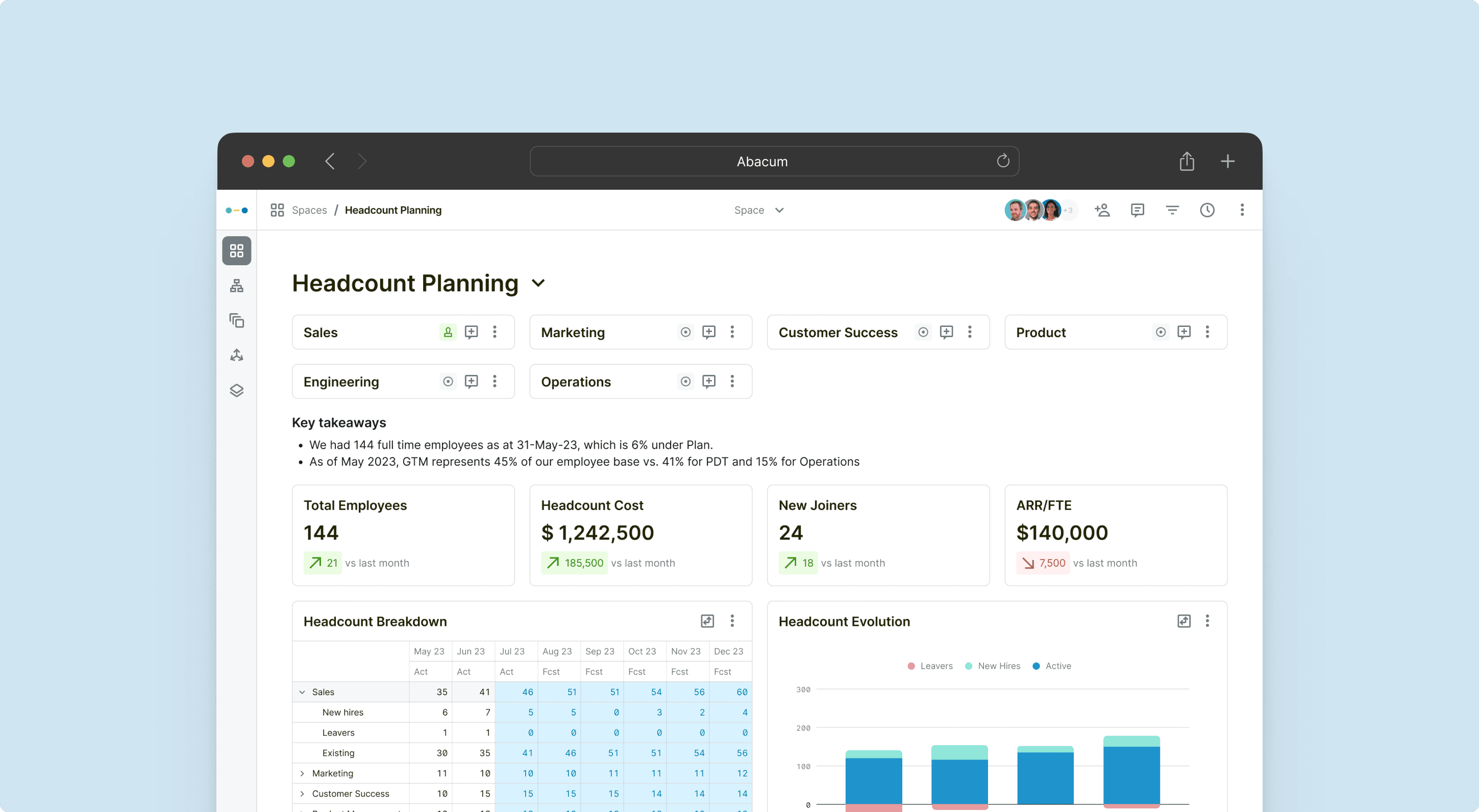
Key Features & Advantages
Its all-in-one model helps businesses maintain an optimal tech infrastructure instead of juggling multiple platforms.
Resource management, shift scheduling, and automated reporting are key features. Its mobile application is especially beneficial for organizations that do a lot of work on mobile devices.
Ideal Fit
Users have noted acquisitions like SecurTime and OneClickHR haven’t been integrated seamlessly, sometimes causing confusion.
It’s best for organizations with a large budget to implement a product that isn’t as agile as competitors.
It’s better suited for mid-to-large markets.
No free version available.
Integrates with accounting systems, ERPs, time and attendance tracking software, and more.
Finance Integrations: Abacum integrates with ERPs (Netsuite, Quickbooks, Sage Intacct, Xero, etc.), CRMs (Hubspot, Salesforce, Pipedrive, etc.), HRIS systems (BambooHR, Workday, Gusto, Rippling, etc.), BI tools (Tableau, Looker, etc.), and other custom systems, too.
Learn more: How to create a dynamic headcount plan
2. UKG (UKG Pro)
Focusing on employee engagement and employee productivity, UKG was formed when Kronos and Ultimate Software joined forces. Along with PeopleDoc, UKG and UKG Pro’s current offerings were designed with employees as the priority. UKG/UKG Pro provides scheduling tools, task management, employee surveys, and combines human capital management with workforce management.
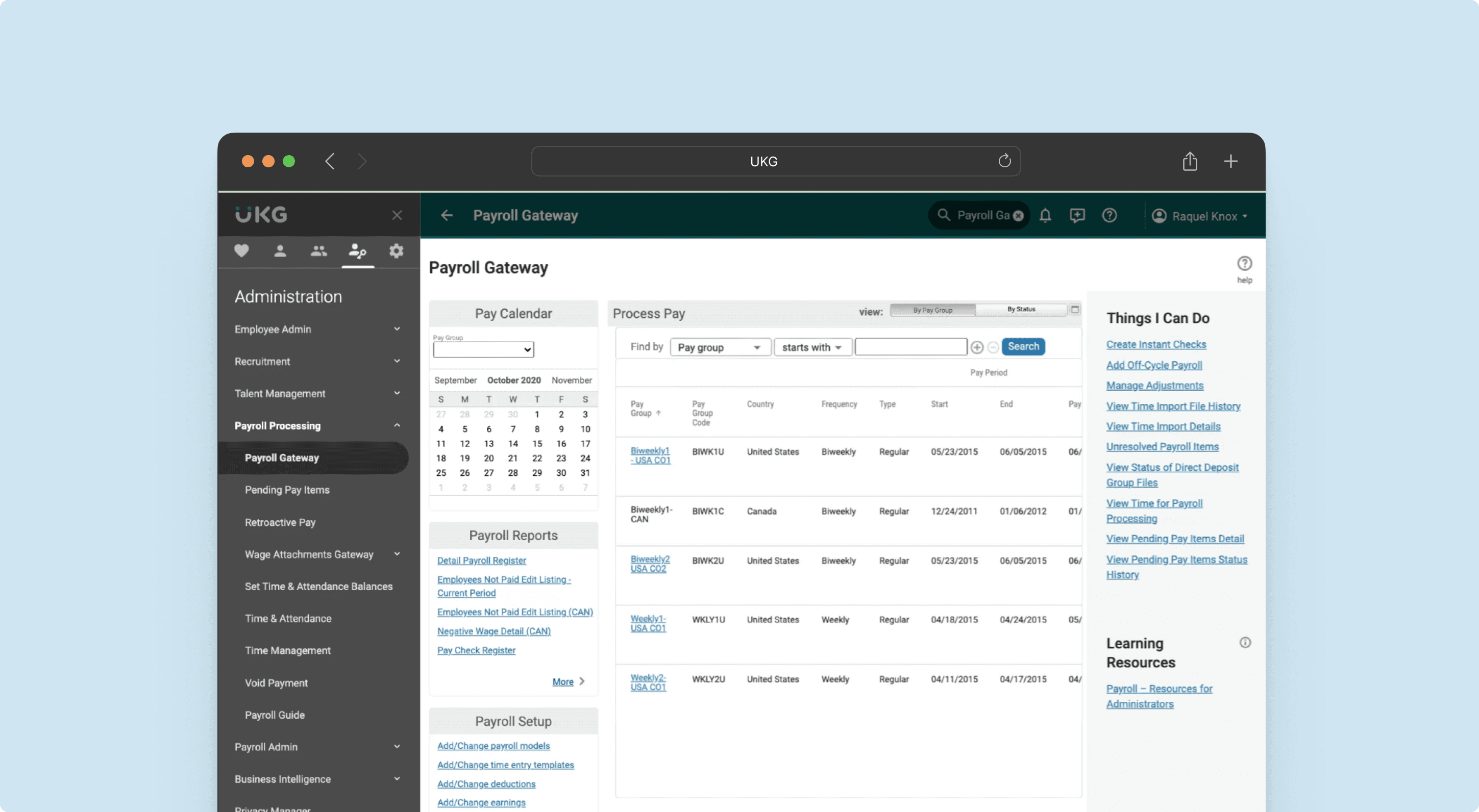
Key Features & Advantages
UKG Pro offers employee autonomy and self-service reporting, streamlining approvals and reducing timesheet hassles.
It integrates with payroll systems to minimize errors and speed up payments.
Ideal Fit
Users can struggle with the merged platforms and note slow customer support.
It’s best for businesses with robust IT teams and larger budgets for customization.
It can fit SMBs, but large organizations get the most value.
No free version available.
Using REST APIs, UKG Pro integrates with most existing finance and HR systems.
3. BambooHR
With a user base of over 30,000 companies, BambooHR provides a unified HR management software that encompasses HR analytics, staffing and onboarding, payroll and benefits, integration marketplace, and employee experience. Equipped with robust reporting capabilities, the platform highlights when teams have too much to manage, automates the approval process for many business functions, and provides leadership with a view of how their teams are being utilized.
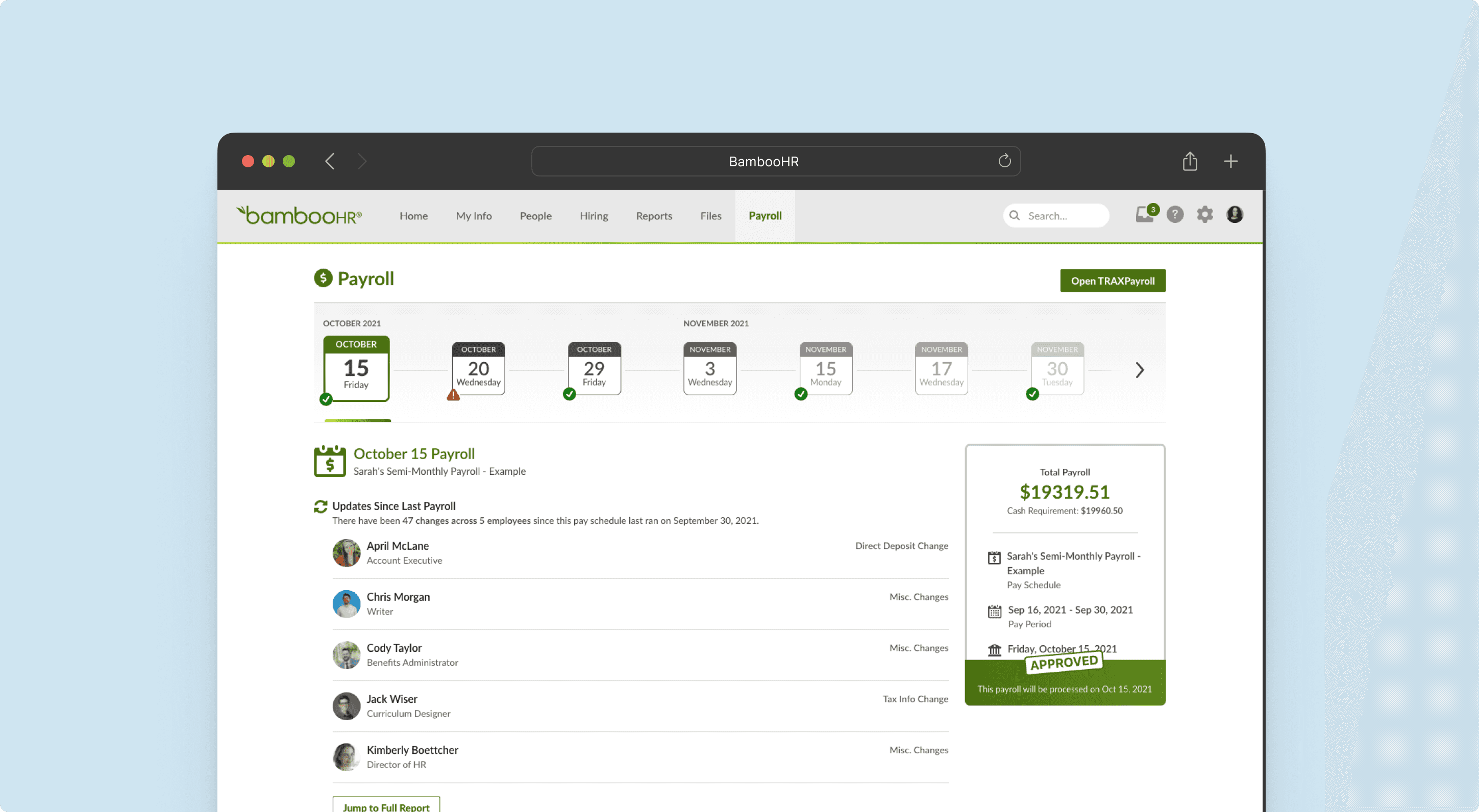
Key Features & Advantages
Drag-and-drop workflow capabilities reduce approval timelines, and self-service tools let employees solve issues on their own.
BambooHR offers a mobile app so users can monitor data and analytics on the go.
Ideal Fit
Performance management features can feel rigid for some users.
It’s best for organizations targeting HR improvements rather than finance as a central driver.
It’s designed specifically for SMBs.
No free version available.
Integrates with Quickbooks, Wave, and over 120 popular HR and finance systems through the BambooHR Marketplace.
4. Workday HCM
A leader in human resource solutions, Workday’s “Workday Human Capital Management” software equips businesses with a skills intelligence foundation that uses machine learning to align employee talents with various open roles and opportunities. It also has built-in feedback loops regarding interview candidates and internal employee performance. Relying on automation to eliminate manual tasks, Workday HCM brings finance and HR together to monitor workforce costs, adjust financial planning, and align business goals with people goals.
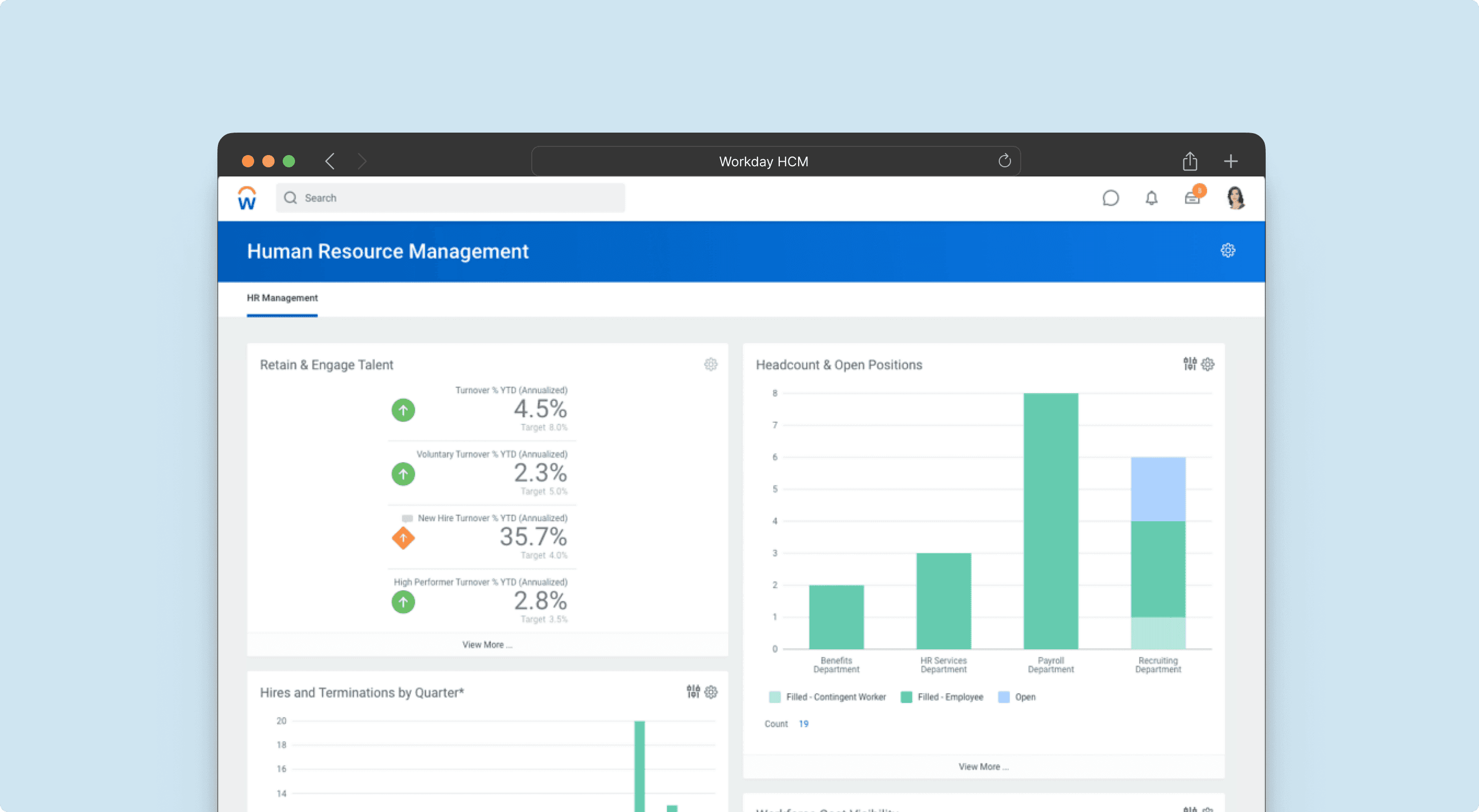
Key Features & Advantages
Workday regularly introduces new WFM capabilities, staying ahead of industry trends.
Finance teams can run flexible modeling scenarios, while built-in feedback loops collect data from candidates and employees.
Ideal Fit
It’s built primarily for enterprise customers, so SMB feedback and requests may not get top priority.
It’s best for large enterprises with coordinated IT, HR, and finance teams.
Not designed for SMBs.
No free version available.
Workday integrates with more than 300 systems, including ERPs, CRMs, and HR software.
5. ADP Workforce Now
A well-known all-in-one HR platform that brings together payroll, benefits, and talent management, ADP Workforce Now can populate data across systems, detect errors before they happen, automate timekeeping, improve attendance tracking, and incorporate compliance measures into every process. Robust and comprehensive, this system also makes talent acquisition and benefits enrollment easy.
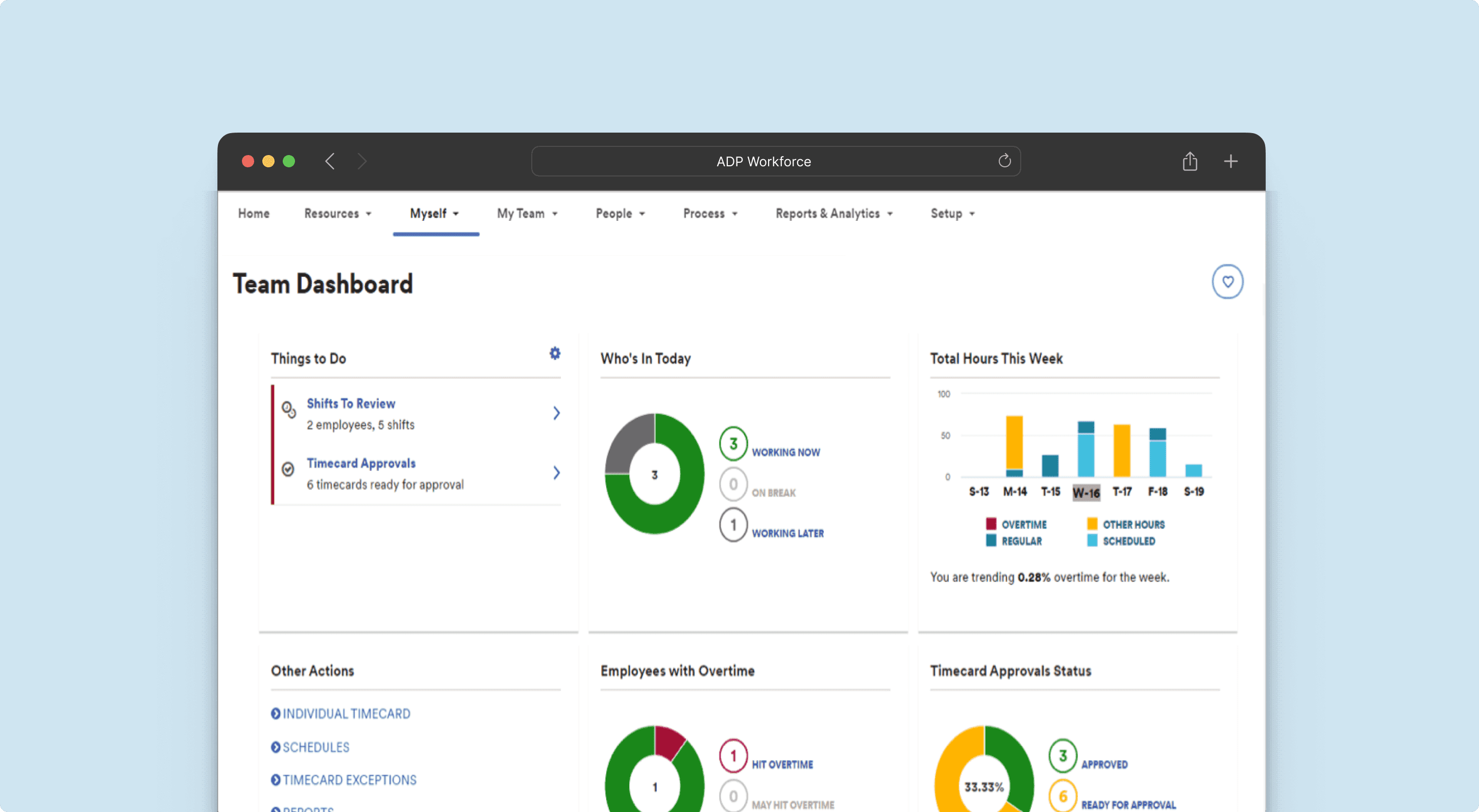
Key Features & Advantages
Its all-in-one model helps businesses maintain an optimal tech infrastructure instead of juggling multiple platforms.
Resource management, shift scheduling, and automated reporting are key features. Its mobile application is especially beneficial for organizations that do a lot of work on mobile devices.
Ideal Fit
Users have noted acquisitions like SecurTime and OneClickHR haven’t been integrated seamlessly, sometimes causing confusion.
It’s best for organizations with a large budget to implement a product that isn’t as agile as competitors.
It’s better suited for mid-to-large markets.
No free version available.
Integrates with accounting systems, ERPs, time and attendance tracking software, and more.
6. Oracle HCM Cloud
Oracle’s human capital management system was designed as an HR solution that helps organizations support their employees as soon as they apply. With the common data source provided by Oracle HCM Cloud, workforce modeling, benefits monitoring, and payroll planning and execution are all conducted in a cohesive, uniform manner. Specifically for WFM needs, the platform provides attendance management, tracks time and labor details, and monitors workforce health and safety, all with intuitive reporting packages waiting downstream.
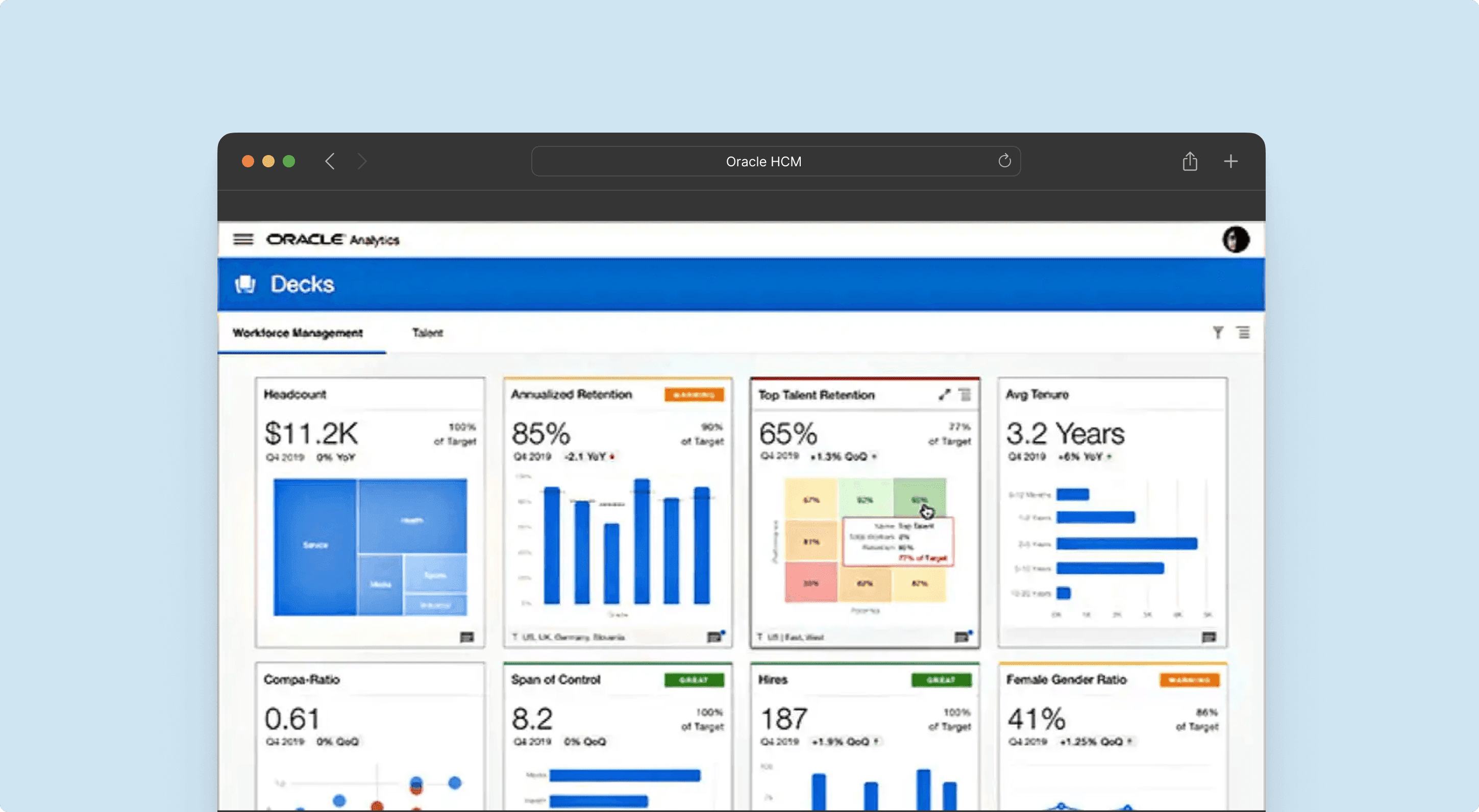
Key Features & Advantages
Oracle HCM Cloud includes native dashboarding and reporting capabilities, letting leadership act on insights quickly.
It provides a portal where you can upload rules, policies, and accrual definitions without changing the tool’s code.
Ideal Fit
The UI/UX isn't very user-friendly, reflecting Oracle’s legacy roots.
It’s best for large companies with bigger budgets.
Better suited for large enterprises, not SMBs.
No free version available.
It modernizes workforce management by integrating with on-prem HRIS or legacy ERP systems through the cloud.
7. SAP Workflow Management
The SAP suite of products includes a comprehensive workforce management software that is equipped with labor forecasting capabilities, resource maximization analytics, and labor cost reporting features. By providing all employees with workforce management insights, fairness is championed and information is democratized, creating a healthier, more cohesive work environment.
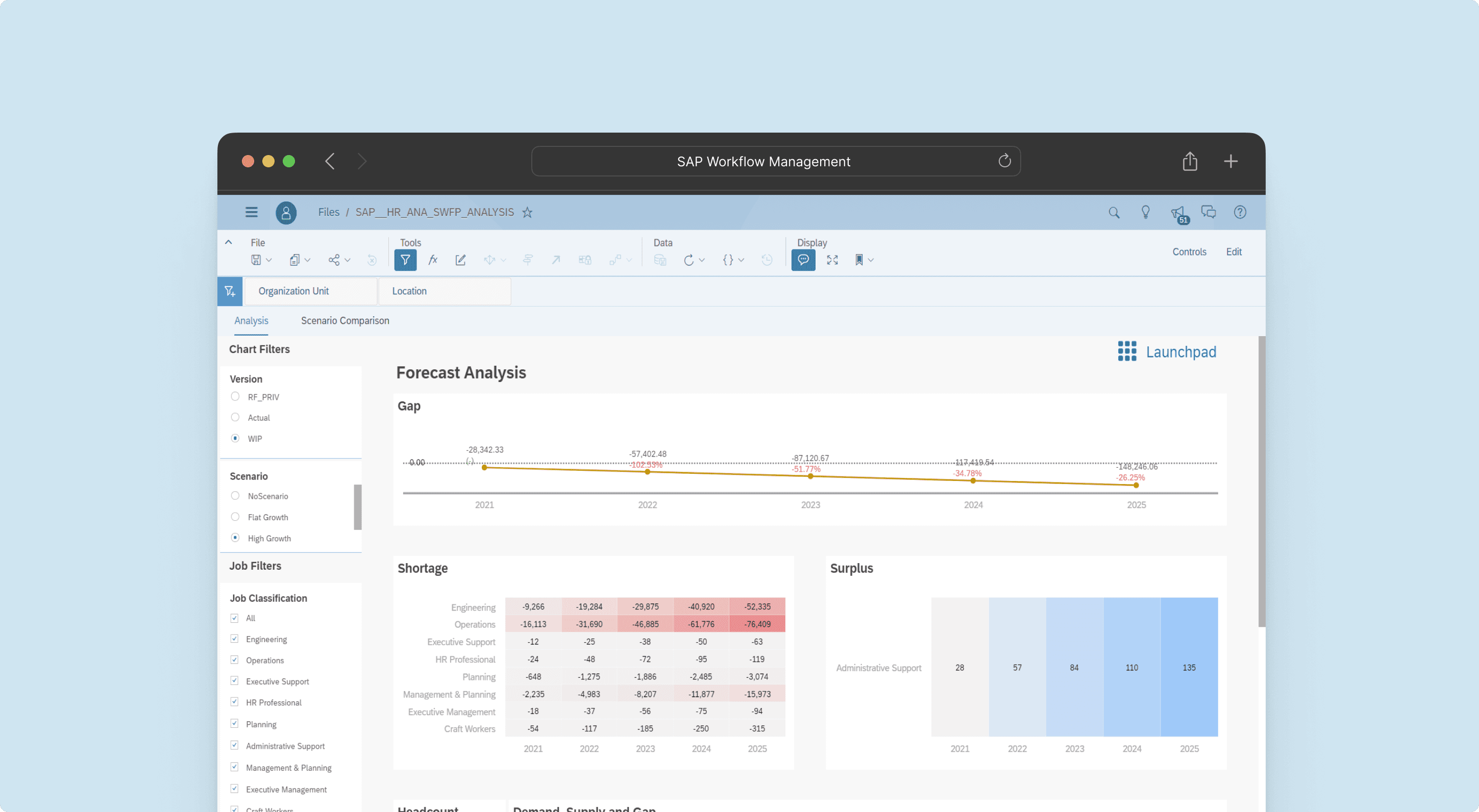
Key Features & Advantages
SAP lets you run millions of scheduling combinations that account for fairness, equity, and special requests.
Its drill-through features align high-level forecasts with employee-level tracking for consistency at every stage.
Ideal Fit
It’s known for high pricing, slower refresh speeds, and a steeper learning curve for non-technical users.
It’s best for tech-savvy organizations already using other SAP systems.
It can fit SMBs in some cases, but large enterprises remain its primary audience.
No free version available.
Integrates with both on-premise and cloud-based systems.
8. Phocas
Less of a focused workforce management software and more of a business analytics suite, Phocas does have some wfm features. It enables quick forecasting and spend monitoring, making it easy to track budget vs. actuals when it comes to personnel expenses. The reporting components of Phocas are strong, intuitive, and include actionable visuals for employees at all levels of the organization.
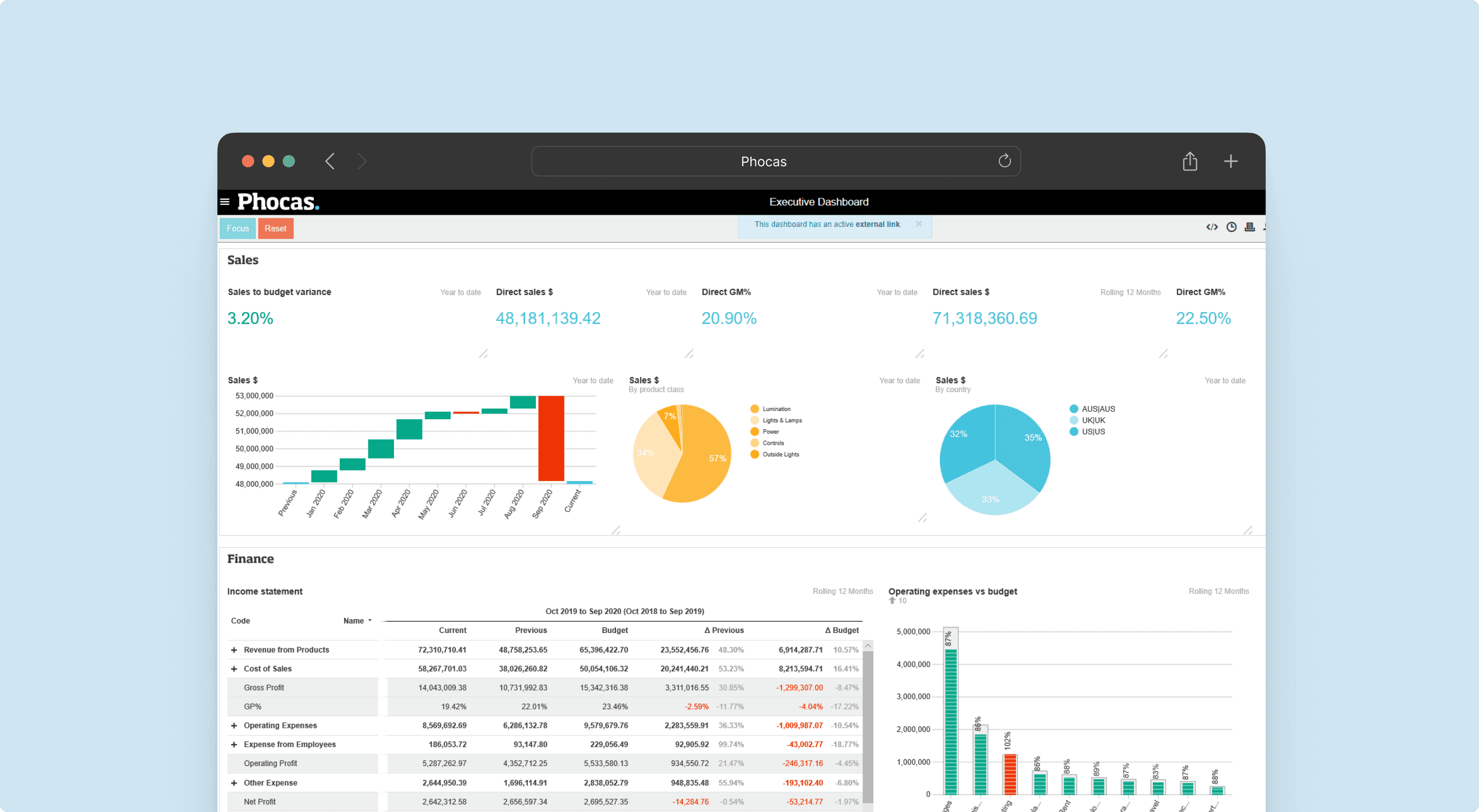
Key Features & Advantages
It’s a multipurpose software designed with smaller businesses in mind, featuring a highly intuitive interface.
Phocas emphasizes reporting and business intelligence, so teams can quickly build professional dashboards and act on real insights.
Ideal Fit
It doesn’t provide deep workforce planning or task management features.
It’s best for small businesses that don’t need advanced WFM tools.
Yes, it fits SMBs.
No free version available.
It integrates with over 200 data sources, including ERPs, MRPs, finance systems, and CRMs.
Learn more: Budget vs. Actuals: A budget variance analysis guide
9. Vena Solution
A well-equipped software that targets all business needs, Vena’s offerings include workforce management along with FP&A features, sales modeling, and more. Using an Excel-like interface, the platform has high adoption rates and fast integration timelines. Employee-level planning with bottom-up and top-down inputs make it possible to plan department-wide salaries, benefits, and taxes. Employee transfers are seamless and talent acquisition planning can be housed within Vena Solution.
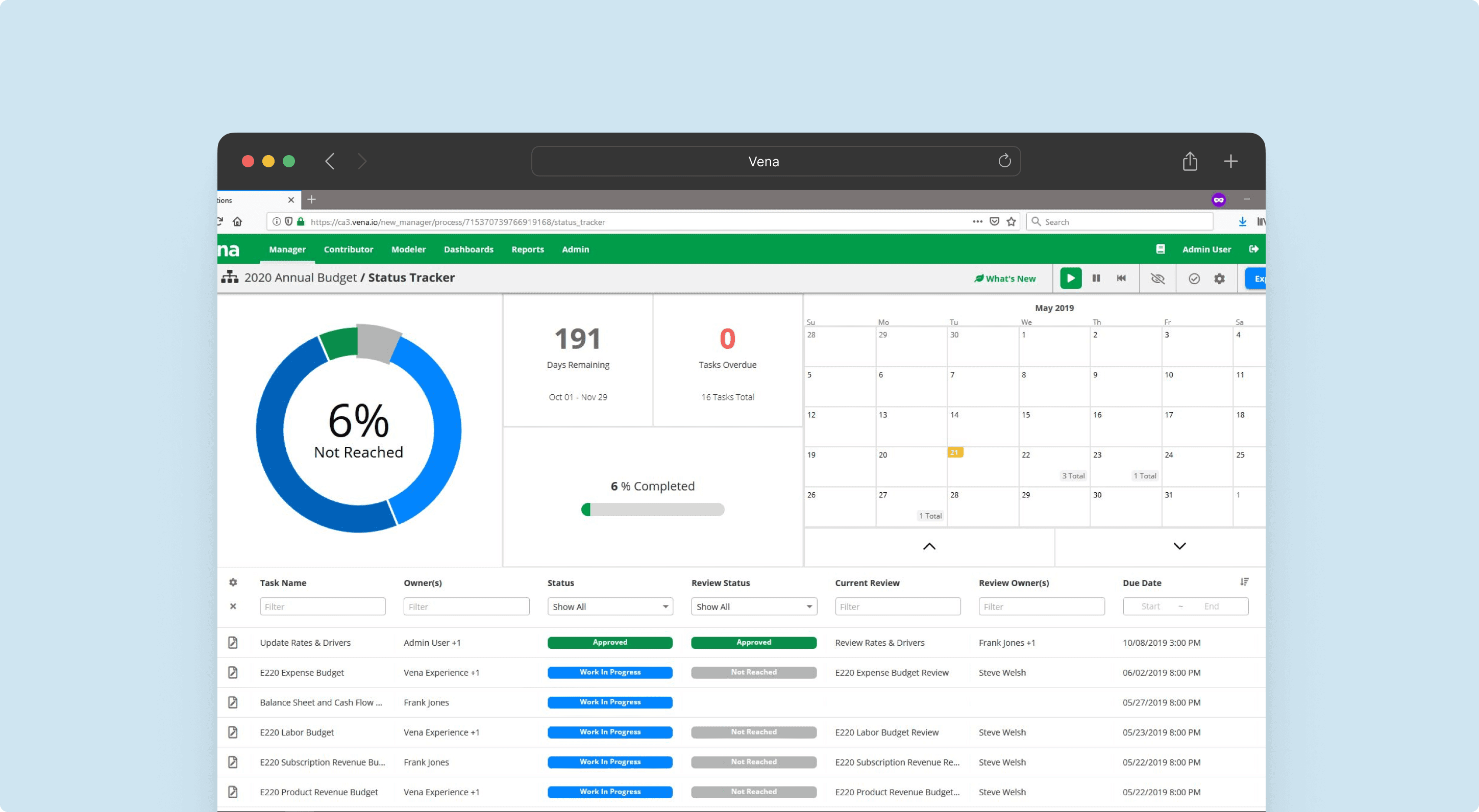
Key Features & Advantages
When used as the core finance system, Vena automatically unifies data and automates variance analysis, including complex calculations like FICA, FUTA, and 401(k).
Its Excel-like interface supports high adoption rates and robust workforce planning across functions.
Ideal Fit
Reports can be slow to open, and GL refreshes can require manual starts.
It’s best for Excel-loving finance teams willing to trade some long-term capabilities for a manageable implementation.
Ideal for medium to large businesses.
No free version available.
Vena integrates with HRIS systems, ERPs, and widely-used business systems.
10. Rippling
Rippling houses three major business products: HR Cloud, IT Cloud, and Finance Cloud. It’s a versatile and flexible solution for many business needs of today. When examining the HR Cloud on its own, it’s clear that Rippling took time to design the product, work with HR professionals on its details, and makes updates as needed. Modern payroll capabilities, benefits tracking, and the ability to customize work schedules are just a few of the platform’s key optimization features.
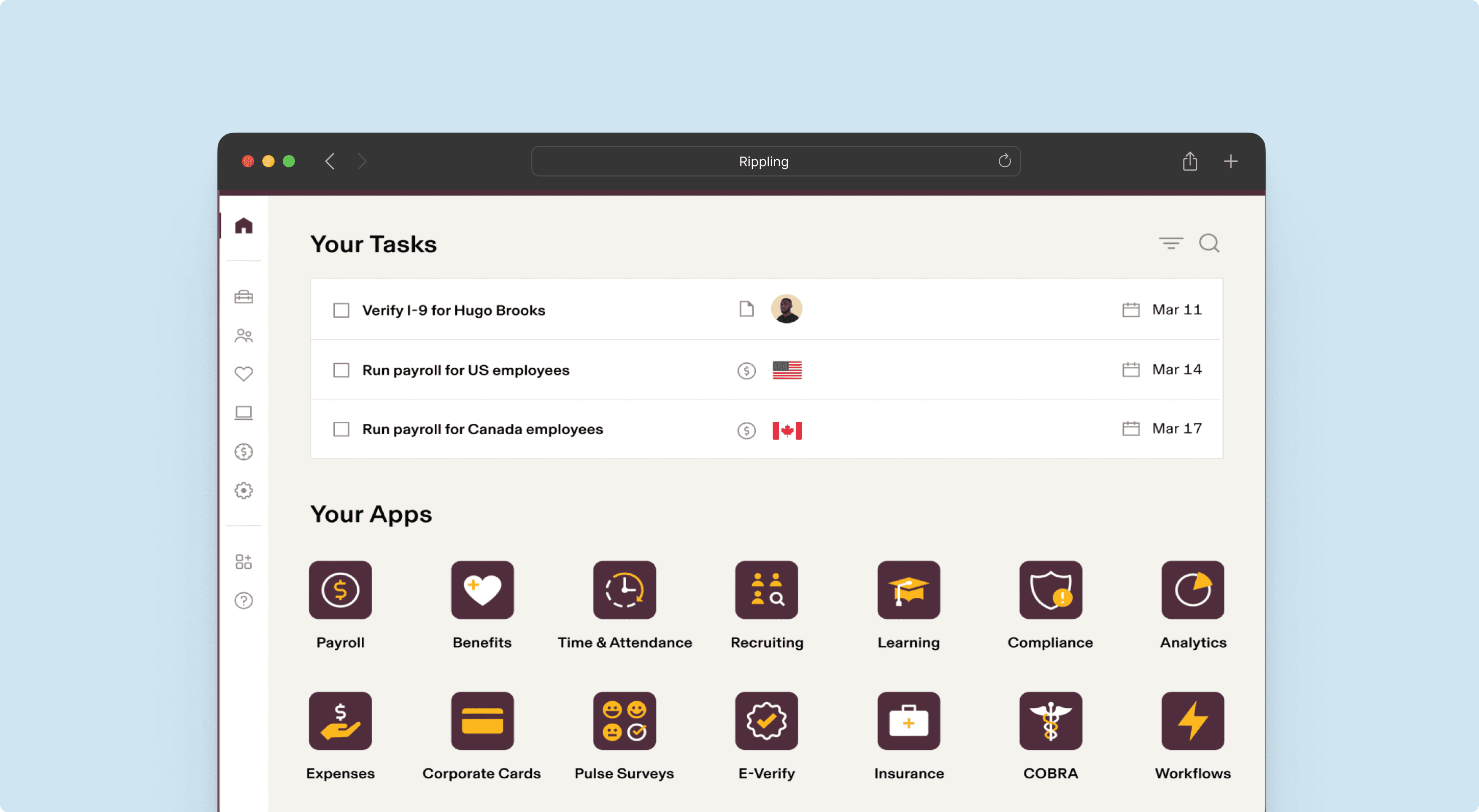
Key Features & Advantages
Rippling’s cohesive approach blends HR, IT, and finance systems, making it stand out in the market.
It allows you to integrate and manage employee training (compliance or otherwise) within the same platform.
Ideal Fit
Some users find product customization challenging, and customer support can be inconsistent.
It’s best for businesses with 2–2,000 employees and self-starter HR teams.
Yes, it fits SMBs.
No free version available.
Rippling integrates with a range of HR, IT, and finance systems.
Get Workforce Management Right with Abacum
Abacum’s approach to workforce management is one that actually works. It equips its users with extensive forecasting capabilities, intuitive dashboards, and cohesiveness across the board.
Designed for mid-market organizations, Abacum’s customer service and superior product have resulted in the organization’s recognition by G2 as a top provider in financial analysis, corporate performance management, and budgeting and forecasting.
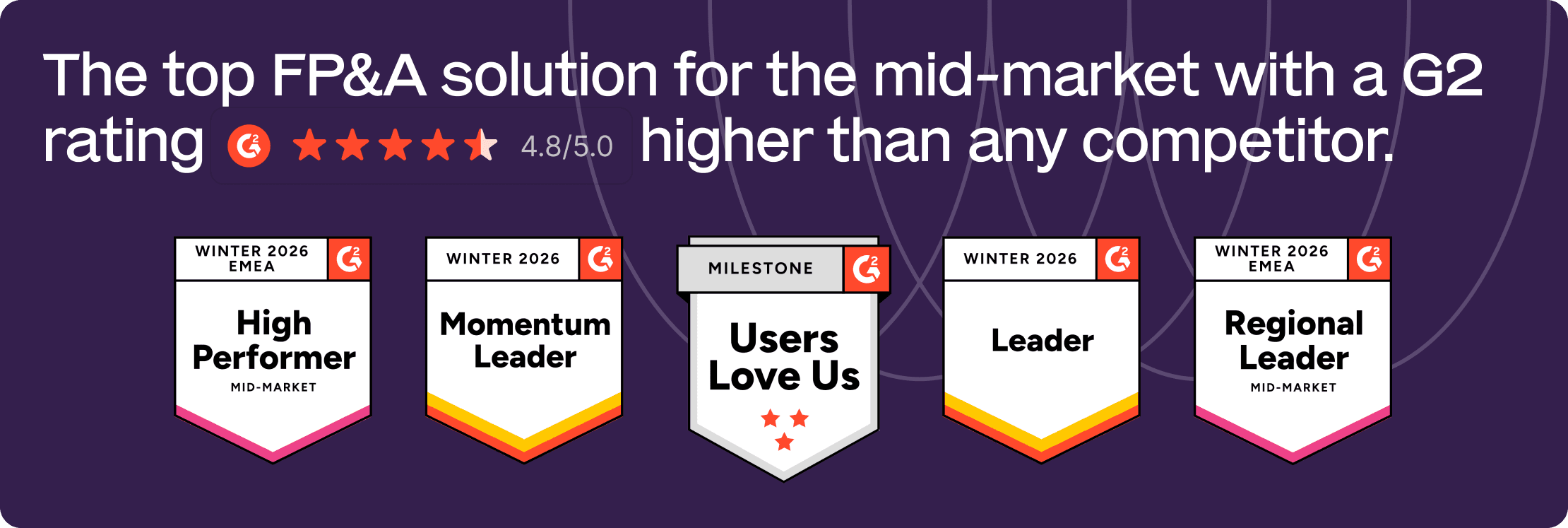
The Abacum team is made up of FP&A and HR professionals; they made a product that solves for the pain points within and across the two functions, as well as strategic business initiatives. As the most user-friendly option, Abacum is the key to employee management, workforce planning, and everything in between.











